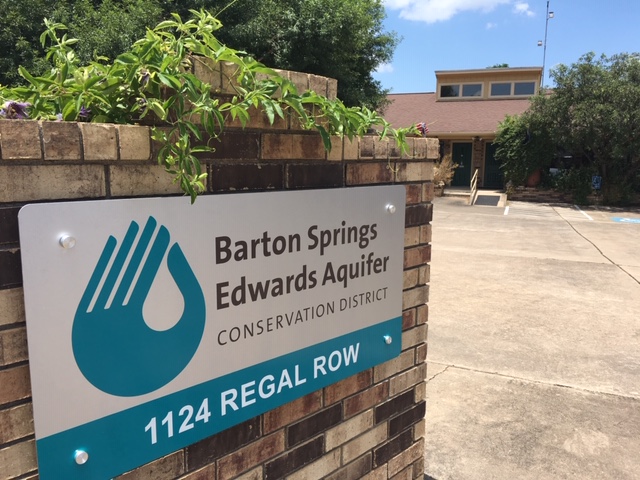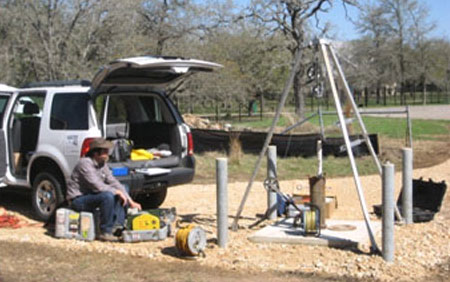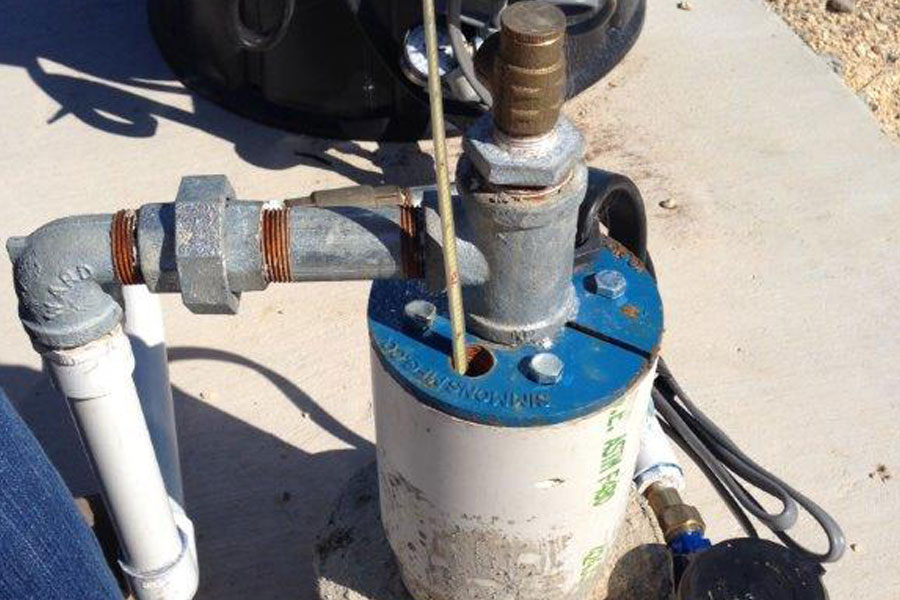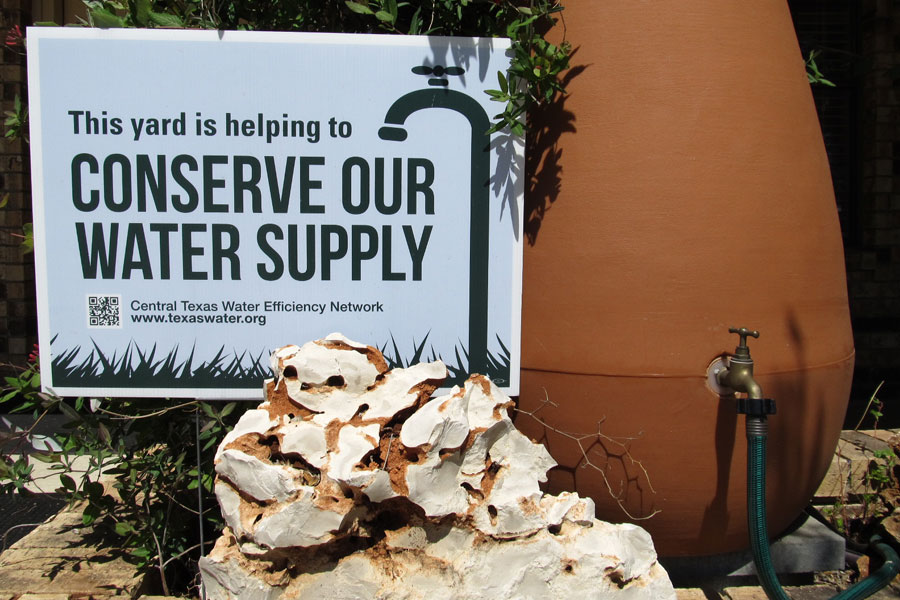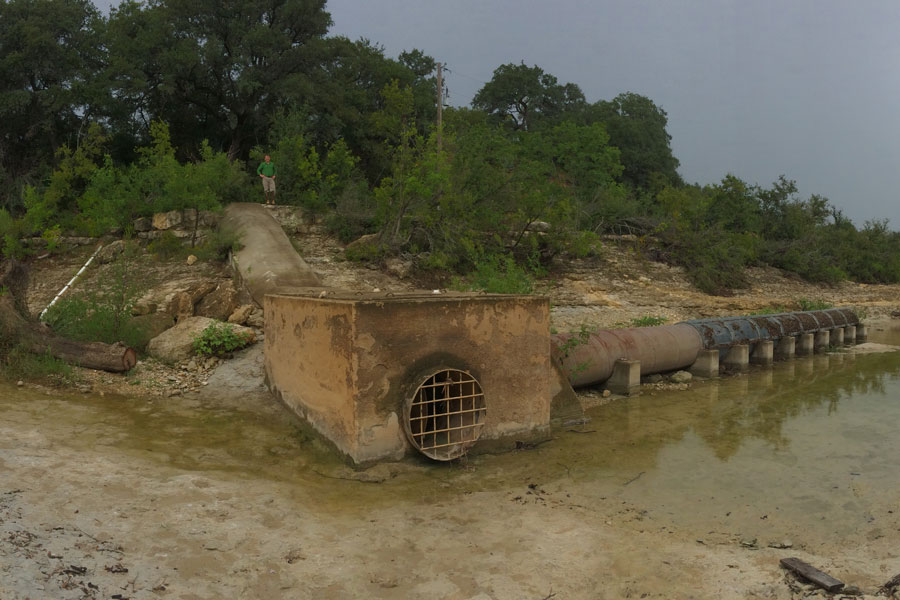Well Components
Groundwater wells may seem simple, but there are a variety of useful components that can help well owners protect their investment and optimize performance of their system.
| Well component | What does It do? | How does It work? | Do you have one? |
|---|---|---|---|
Pump Protector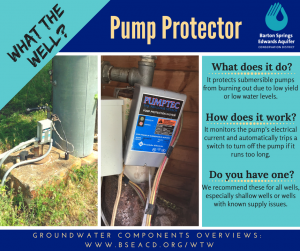 |
It protects submersible pumps from burning out due to low yield or low water levels. | It monitors the pump’s electrical current and automatically trips a switch to turn off the pump if it runs too long. | These are recommended for all wells, especially shallow wells or wells with known supply issues. |
Pressure Tank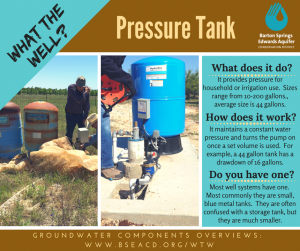 |
It provides pressure for household or irrigation use. Sizes range from 10-200 gallons; average size is 44 gallons. | It maintains a constant water pressure and turns the pump on once a set volume is used. For example, a 44 gallon tank has a drawdown of 16 gallons. | Most well systems have one. Most commonly they are small, blue metal tanks. They are often confused with a storage tank, but they are much smaller. |
Storage Tank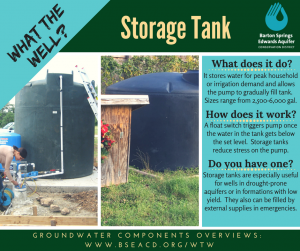 |
It stores water for peak household or irrigation demand and allows the pump to gradually fill tank. Sizes range from 2,500-6,000 gallons. | A float switch triggers pump once the water in the tank gets below the set level. Storage tanks reduce stress on the pump.
|
Storage tanks are especially useful for wells in drought-prone aquifers or in formations with low yield. They also can be filled by external supplies in emergencies. |
Water Softener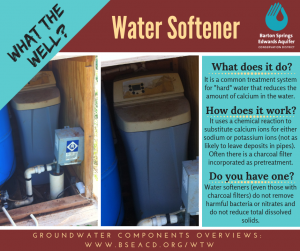 |
Water softeners are a common treatment system for “hard” water that reduces the amount of calcium in the water. | It uses a chemical reaction to substitute calcium ions for either sodium or potassium ions (not as likely to leave deposits in pipes). Often there is a charcoal filter incorporated as pretreatment. | Water softeners (even those with charcoal filters) do not remove harmful bacteria or nitrates and do not reduce total dissolved solids. |
UV Light System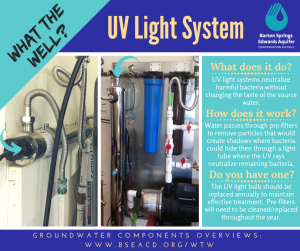 |
UV light systems neutralize harmful bacteria without changing the taste of the source water. | Water passes through pre-filters to remove particles that would create shadows where bacteria could hide then it goes through a light tube where the UV rays neutralize the remaining bacteria. | The UV light bulb should be replaced annually to maintain effective treatment. Pre-filters will need to be cleaned/replaced throughout the year. |
Chlorinator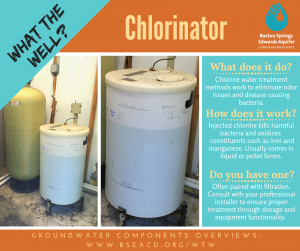 |
Chlorine water treatment methods work to eliminate odor issues and disease causing bacteria. | Injected chlorine kills harmful bacteria and oxidizes constituents such as iron and manganese. Usually comes in liquid or pellet forms. | Often paired with filtration. Consult with your professional installer to ensure proper treatment through dosage and equipment functionality. |
Visit the Texas Well Owner Network Factsheets page for more details on specific water quality treatment options.
